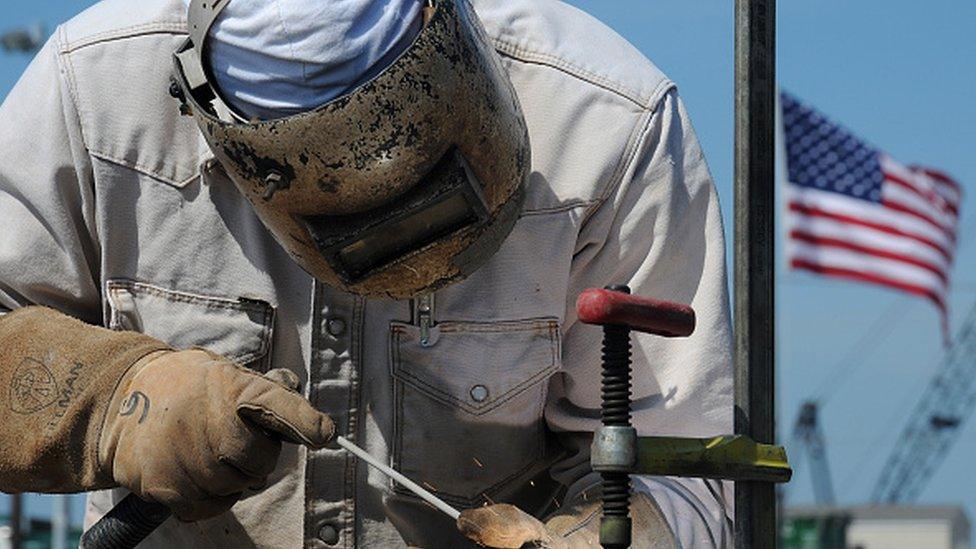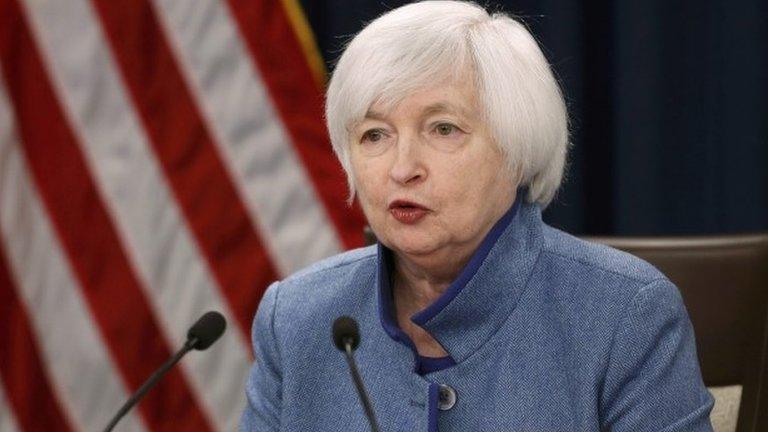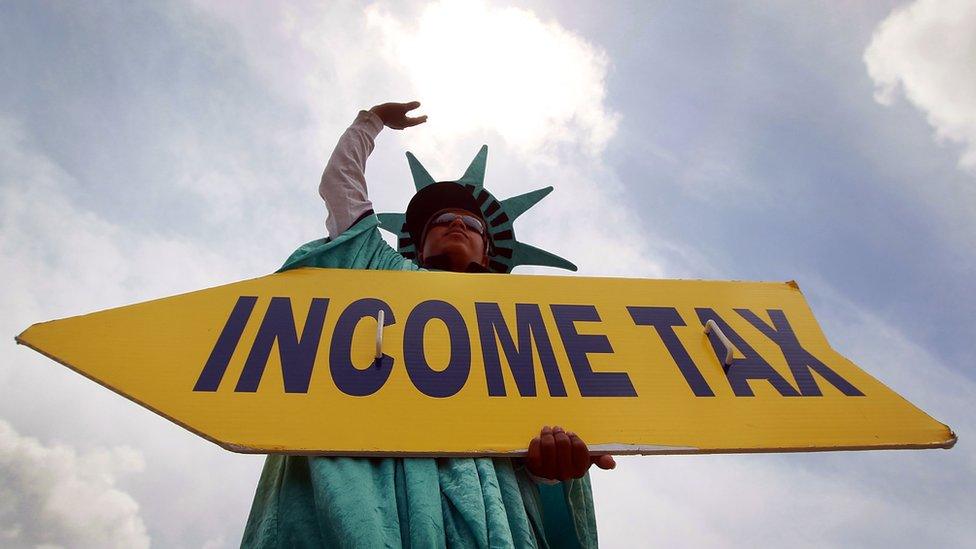US jobs growth slows to 156,000 during December
- Published

US businesses added 156,000 jobs in December in the last release of key economic data before Donald Trump is sworn in as US president.
The number of jobs created, external fell from an upwardly revised 204,000 in November and came in below market expectations of 175,000 new roles.
The jobless rate edged up last month to 4.7% from 4.6%.
Mr Trump, who takes office on 20 January, has pledged to create 25 million jobs over 10 years.
The US Bureau of Labor Statistics said that the annual rate of wage growth accelerated in December to 2.7%. This compares with a 2.5% increase in annual average hourly earnings recorded in November and is the quickest pace of growth since June 2009.
The bureau revised up the number of new jobs created in November from an initial count of 178,000 to 204,000.
Trump inauguration
Over the last year of Barack Obama's presidency, job growth reached 2.2 million, down from 2.7 million in 2015.
Luke Bartholomew, investment manager at Aberdeen Asset Management, said: "Job growth was decent and wage growth is picking up nicely. But the only real show in town is Donald Trump's inauguration.
"The economy is doing well and doesn't obviously need the shot in the arm that Trump is planning on providing.
"The interaction between the Fed and Trump, and the resulting policy mix, is likely to be the defining theme for investors this year."


Analysis: Andrew Walker, World Service economics correspondent
This is the last jobs report of the Obama presidency.
Some of the figures for that eight-year period look pretty good. Eleven million more people with jobs, and the unemployment rate down from 7.8% to 4.7%. But then in some respects Mr Obama did have quite a tailwind to help him.
First of all, he came to power as the great recession was really beginning to bite. He had the benefit of the subsequent cyclical recovery you would expect anyway. The working-age population has grown, which means increased numbers with jobs are to be expected. The percentage of people (aged 16 or over) with jobs has actually come down a little although that has a lot to do with an ageing population.
And there's a case for saying that wider measures of labour market problems (people who want to work longer hours or have given up looking for work and are not counted as unemployed) are still somewhat on the high side.
The conclusion? Plenty of scope for argument about President Obama's jobs legacy.

Mr Trump has promised to cut tax both for individuals and for businesses, as well as invest in national infrastructure.
The US Federal Reserve indicated in the minutes from its last rate-setting meeting in December that it may have to raise interest rates at a quicker pace if Congress passes Mr Trump's tax cuts.
The US Fed has lifted interest rates just twice in the past decade, with the most recent increase to 0.5%-0.75% last month.
Kully Samra, UK managing director at Charles Schwab, said: "Despite December's non-farm payroll numbers missing forecasts, the US economy still has a robust labour market.
"The case for investment in the US remains very much intact. These figures should still be viewed as a justification of the interest rate hike last month, and we continue to expect the Fed to raise rates throughout the year."
Mr Trump has promised to be "the greatest jobs president God ever created" and hopes to boost US economic growth to 4%.
Since President Obama's inauguration in January 2009, the number of people with jobs has increased by 11.25 million. The unemployment rate has fallen from 7.8% to 4.7%, having peaked at 10% in his first year.
- Published6 January 2017
- Published14 December 2016

- Published9 November 2016
